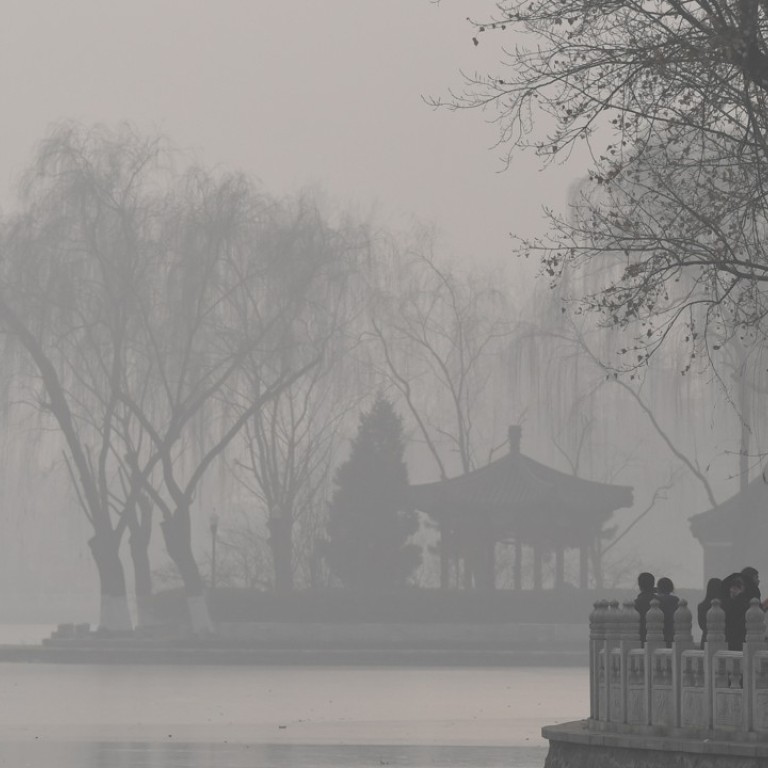
Beijing's air pollution helps its trees grow better, faster, stronger, study finds
The Chinese capital’s notorious air pollution may actually help its trees grow more quickly, researchers find
Trees in Beijing grow more quickly in smog than they do under blue skies, Chinese researchers have found.
The government-backed study, published last month in the journal Global Change Biology, tracked the growth rates of six aspen trees in Beijing between 2012 and 2015, when the city was shrouded in some of the thickest smog it has ever seen.
The field observations showed the thicker the smog, the faster and stronger the trees grew.

“It suggests an even more challenging task in coping with climate change while fighting against air pollution in the future,” Liu Lingli, the study’s lead researcher from the Institute of Botany at the Chinese Academy of Sciences in Beijing, said.
“This is because trees that absorb major greenhouse gas carbon dioxide will grow slower than they did once the aerosol concentration decreases.”
In effect, if the drive to eradicate atmospheric pollution proves successful, more trees would have to be planted to help absorb the greenhouse gases that cause global warming.
China ‘to carry 30 per cent more goods by rail’ in pollution drive
Liu said that countries with high levels of PM2.5 – the small particles that are most harmful to human health – such as China, India and Brazil should reduce their carbon footprints by a larger percentage in the future to compensate for the loss of this “positive side effect” from air pollution.
Aerosols are minuscule particles floating in the atmosphere, including soot, dust and sulphates. They can be produced from industrial and agricultural processes such as burning coal, gas or wood.
Such particles are harmful to human health but help plants to photosynthesise, the process whereby they convert light into energy.

While the findings might surprise many, the results were not unexpected for experts dedicated to studying plant growth, said Wang Xin, one of Liu’s doctoral students.
“Aerosol particles can increase the efficiency of photosynthesis by diffusing light, as observations over the past 30 years have showed,” he said.
A Nasa-funded study in 2004 found that tiny atmospheric particles help to scatter sunlight, allowing it to reach more leaves in different layers of each plant.
Aerosols in the air also increase the humidity around plants so that they can open the stomata on their leaves more widely without worrying about losing too much water, the Chinese researchers said.
Stomata are the“pores” found on the epidermis of leaves and stems of plants that assist respiration and photosynthesis.
Apple takes a bite at green energy in China
“Plants are busy with two things in their lifetime: pulling more carbon [dioxide] out of the air and retaining water,” Liu said.
“They dare to open their pores wider only when in humid environments.”
Wang is still tracking the effects of atmospheric particles on forest growth in Beijing and said trees were now growing more slowly compared with the period between 2012 and 2015, when pollution was at its worst.
She also evaluated the sunlight-scattering effect on soybeans.
“The results are not linear as we see in aspen trees,” Wang said. “Soybeans’ growth rates rise as the aerosol concentration increases but fall when it passes a certain level.”

